
Stephen Ornes has been writing for Science News Explores since 2008, and his 2014 story "Where Will Lightning Strike?" won an AAAS/Kavli Gold Award. He lives in Nashville, Tenn., and he has three children, who are inventing their own language. His family has a cat, six chickens, and two rabbits, but he secretly thinks hagfish are the most fascinating animals. Stephen has written two books. One is a biography of mathematician Sophie Germain, who was born during the French Revolution. The other, which was published in 2019, features art inspired by math. Visit him online at stephenornes.com.

All Stories by Stephen Ornes
-
 Physics
PhysicsRaindrops break the speed limit
Raindrops shouldn't be able fall faster than what is known as their terminal velocity. But no one told the rain. Researchers have found droplets breaking that speed limit.
-
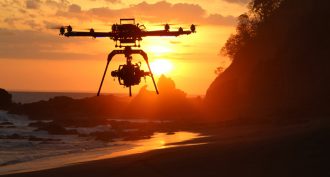 Tech
TechDrones put spying eyes in the sky
From keeping tabs on changing landscapes to protecting animals from poachers, scientists are using drones to push their fields forward.
-
 Physics
PhysicsEscape from a lab-built black hole
In the 1970s, physicist Stephen Hawking suggested that some particles could escape a black hole. An experiment now shows how, using a lab-made black hole ‘made’ from sound.
-
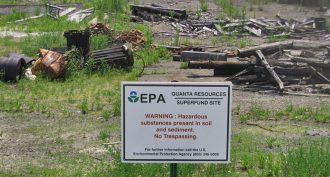 Environment
EnvironmentCleaning with greens
Cleaning up toxic waste is a big and expensive problem. Scientists have tinkered with the genes in some plants. Now those greens can take on this dirty work. Still, they're not quite ready for prime time.
-
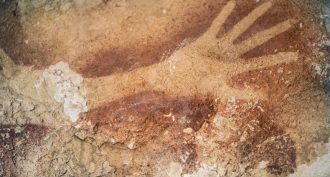 Humans
HumansStone Age stencils: Really old art
Scientists thought that cave art started in Europe. New analyses now dash that assessment. Stencils in an Indonesian cave are every bit as old as the better-known drawings in caves in France and Spain.
-
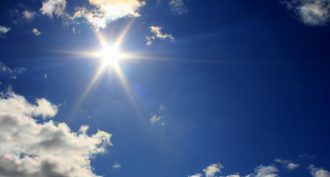 Chemistry
ChemistrySunlight might have put oxygen in Earth’s early air
High-energy bursts of ultraviolet light can break apart carbon dioxide, yielding oxygen gas. The experiment may mimic what happened on Earth billions of years ago.
-
 Health & Medicine
Health & MedicineStrong body helps the mind
Study finds new link between the body and brain in mice and may help explain how exercise heals.
-
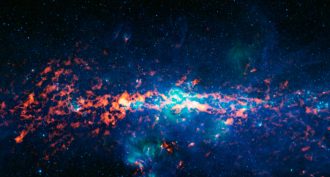 Chemistry
ChemistrySpace cloud may hold clue to life’s origins
Scientists probing a cloud of dust and gas some 26,000 light-years away found a chemical with a structure resembling molecules critical for all life on Earth.
-
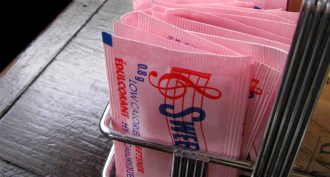 Health & Medicine
Health & MedicineArtificial sweeteners may evict good gut microbes
People use saccharin and other artificial sweeteners to try to stay healthy. A study now suggests such sweeteners might actually cause harm by encouraging the wrong bacteria to grow in our guts.
-
 Tech
TechSquishy robot propelled by ka-pow!
This is not your average robot. It flies through the air, propelled by an explosion in one of its arms. It could prove useful in disaster areas or war zones.
-
 Fossils
FossilsEarly dino-era start for modern mammals
Fossils of an extinct group of rodent-sized mammals suggest they were related to modern mammals. These ancient remains push back the origin of mammals by many millions of years.
-
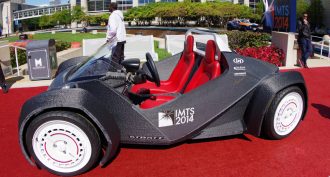 Computing
Computing3-D printers are making cars!
3-D printing technology makes it possible to print anything — even a car. A team of engineers designed the Strati and then printed the electric cars at events in Chicago and New York.